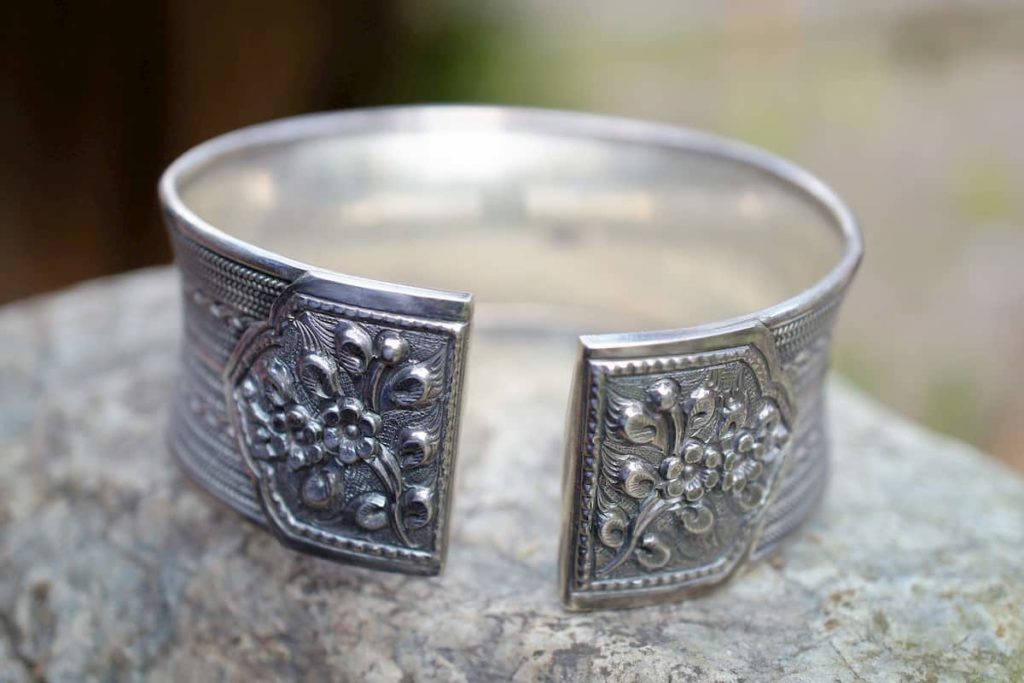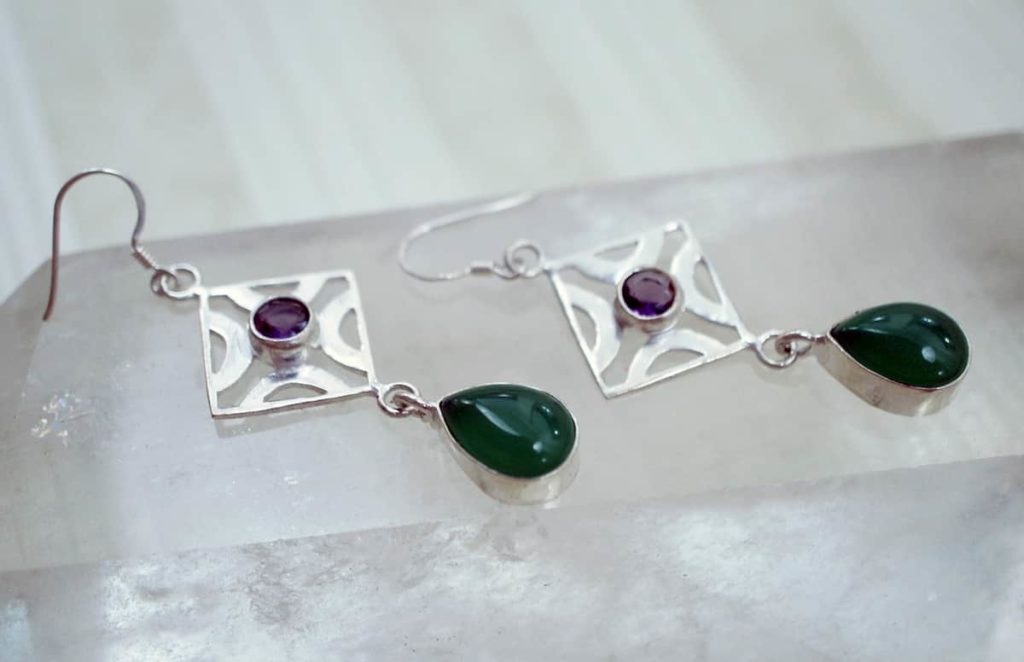Is Sterling Silver Hypoallergenic for Sensitive Skin?

A lot of gold and silver bullion investors also collect scrap gold and scrap sterling silver jewelry because savvy buyers can sometimes get it under melt value. In many ways, gold or sterling silver jewelry can be the perfect gift. Whether you’re buying for yourself or for others, a quality necklace or a beautiful pair of earrings are time-honored traditions among gifters. But nothing can ruin a pretty jewelry gift easier than an allergic reaction. Just imagine it. You’ve given the perfect set of earrings, or even a beautiful sterling silver bracelet, to your loved one. The very next day, their skin has broken out in painful, itchy hives. Talk about a holiday mood killer, right? One of the most important questions to ask before buying sterling silver jewelry for someone with sensitive skin: is sterling silver hypoallergenic for sensitive skin? Sterling silver, also known as 925, refers to any bullion item with 92.5 percent pure silver. The other 7.5% of the object is made out of other metals. Copper is commonly added to 925 silver, but other metals are sometimes used. Really, the type of metals used to make sterling silver jewelry comes down to the preferences of the manufacturer. But many people wonder is sterling silver hypoallergenic? This question is about more than just semantics. When you buy a gift for someone, their comfort is obviously an important concern. The last thing anyone wants to do is buy their loved one a piece of jewelry that causes them to break out in hives, blisters, or worse. This is no small issue. People with sensitive skin are especially at risk of developing a serious allergic reaction if they are exposed to allergenic metals. If your loved one has sensitive skin, then avoiding precious metals with allergic properties can become a very serious part of the gift-buying process. The answer to the question “is sterling silver hypoallergenic” is: mostly. In today’s guide, we’ll break down this important question as clearly as possible. Put simply, sterling silver is hypoallergenic, but the real answer depends on exactly what kind of metal the 7.5% of the 925 silver includes. 
What is Sterling Silver Made of?
This is the single most important question you can ask when you want to find out whether a piece of sterling silver jewelry is hypoallergenic. Sterling silver is considered an alloy. An alloy is just a product that contains two or more different kinds of metals. In the case of sterling silver, these products contain 92.5% silver and 7.5% of numerous other metals. We know that silver itself is hypoallergenic. While some people certainly do have silver allergies, research tells us that a genuine allergy to silver is exceedingly rare. People that have asked is sterling silver hypoallergenic often know they’re allergic to silver, they often don’t understand that they’re actually just allergic to one of the other metals that are combined to make their silver jewelry. Copper is easily the most common metal used to make sterling silver, and this is the case for several important reasons. First, copper is an exceptionally strong material. Completely pure silver is extremely fragile, meaning that it doesn’t work nearly as well in jewelry as it does in silver bars and coins from bullion dealers like Hero Bullion. Combining 92.5% silver with 7.5% of copper results in an alloy that has the appearance of silver without the fragility. If you’re wondering is sterling silver hypoallergenic, you should also take a look at the other metals in sterling and find out if you have an allergy to copper or nickel. There’s another reason copper is so commonly used in sterling silver items. Copper is also hypoallergenic. Like silver, allergies to copper are very rare. Allergic reactions to copper are so uncommon, in fact, that some medical inserts are made out of this metal. Copper is relatively cheap, which also helps to keep the price of sterling silver alloy jewelry as low as possible. Is sterling silver hypoallergenic? It is when its manufacturers avoid nickel in their alloys.
Beware of Nickel Jewelry
Unlike silver and copper, nickel is a relatively common allergen. Studies find that somewhere between five and ten percent of people are allergic to nickel. Compared to other kinds of metals, people are most likely to experience a serious allergic reaction when their skin comes in contact with nickel. People who want to know “is sterling silver hypoallergenic” need to avoid all jewelry containing large amounts of nickel. To be fair, many jewelry companies avoid adding nickel to their silver alloys for this exact reason. They know that a large percentage of the population is allergic to nickel, so they tend to keep the allergenic metal out of their jewelry pieces. However, some manufacturers don’t have the keen sense to avoid this potentially harmful metal. Our recommendation is to look for jewelry that is completely free of nickel. Some distributors will market their jewelry as “nickel-free” for this exact reason. One important thing to remember is that deals that seem too good to be true probably are. Companies with bad reputations, or retailers selling supposedly sterling silver for prices far below what their competition offers, might be making their profit by including nickel in their jewelry. The best sterling silver often contains a combination of primarily silver and copper. Hypoallergenic jewelry could contain several different types of precious metals, but this combination is the most common among high-quality jewelry manufacturers. Avoiding nickel and sticking with copper-silver alloys makes it far less likely that your jewelry will be the cause of an allergic reaction.
What Types of Silver Jewelry are Allergenic?
While true sterling silver composed of silver and copper is mostly hypoallergenic, some other types of silver jewelry can be highly allergenic. What’s more important is that these categories of jewelry can often appear to be high quality and hypoallergenic. It’s essential that jewelry customers understand and check their jewelry to see exactly what metals it contains. Many cheap jewelry manufacturers will use confusing terms to hide the fact that their jewelry is produced using cheap and allergenic precious metals. A phrase like “silver-filled,” as an example, might make it seem that the jewelry is almost all silver. But the term can mean many things; some retailers sell “silver-filled” jewelry with only a thin layer of silver surrounding a combination of different cheaper metals. “Silver plating” is another common term used to describe the same concept. Silver-plated jewelry could very easily be the cause of allergies. While the silver on the outside of the piece is a hypoallergenic metal, there could be a thicker layer of nickel below it. But is sterling silver hypoallergenic, even when allergenic metals are hidden below a layer of purer silver? The answer depends on a few factors. If the layer of silver plating is coated to prevent it from being damaged, then this might be enough to avoid an allergic reaction. But when the user’s skin is exposed to the base metal below the silver plating, an allergic reaction is likely. Rhodium plating is a great way to make hypoallergenic jewelry. Even when silver is combined with nickel to make the sterling silver alloy, a fine layer of rhodium can protect the user’s skin from being exposed to the allergenic metals under the silver. Rhodium plating on sterling silver jewelry can even make the silver appear brighter and shiner, too!
Sterling Silver Versus Stainless Steel for Allergies
Many people wonder about the differences between stainless steel and sterling silver. Stainless steel is often much cheaper than sterling silver, so it’s natural to wonder what causes this radical price difference between the two. Sterling silver is quite a bit brighter and shinier than stainless steel. Stainless steel is made by combining steel with chromium. The result is an extremely durable material with a relatively shiny appearance. The main problem with stainless steel for people with sensitive skin is that it might contain small amounts of nickel, as well as iron. Both of these metals have been known to cause allergic reactions. For most people, stainless steel usually contains too little nickel content to cause much of a problem. But if you or a loved one has hypersensitive skin, stainless steel could potentially cause allergy symptoms when exposed to your skin. To avoid this problem, look for stainless steel advertised to contain absolutely no nickel. There are other reasons why most people prefer silver to steel, however. Silver is often considered prettier than stainless steel, and it might retain value over time more effectively. When you check your jewelry carefully to verify that it contains no allergenic metals in its alloy, you can avoid the risk of experiencing a reaction.
How to Buy Hypoallergenic Silver Jewelry
Whether it’s for yourself or a loved one, shopping for jewelry can be a complicated process. Many companies in the jewelry industry try to hide the exact components of their alloys, because they know that the savvy consumer is looking to buy sterling silver that has no chance of irritating the skin or causing breakouts. Etchings are a good way to verify the silver purity of a piece of jewelry. Many manufacturers will etch a number representing the purity into the object. For sterling silver, the number to look for is 925. Try checking the inside of a ring, or the clasp of a bracelet or necklace. Sometimes, sterling silver items will be marked with some abbreviation of the term, such as “ster” or “sterling.” But this is rare with jewelry and is mostly used to mark other silver objects. Once you’re sure that you’re dealing with sterling silver instead of a different purity level, you need to figure out what metals compose the alloy. This is the biggest step in answering the question “is sterling silver hypoallergenic” before making your purchases. Ideally, the distributor of a piece of jewelry will clearly state which metals are included in the sterling silver alloy. If they don’t, ask! It’s also helpful to filter your search for jewelry using the term “hypoallergenic” or “nickel-free.” This is especially important if you’re buying jewelry online and don’t have the advantage of directly questioning the salesperson in a shop.
Frequently Asked Questions About Is Sterling Silver Hypoallergenic
Jewelry buyers have many questions about the hypoallergenic status of sterling silver. This section will answer some of the most commonly asked questions about sterling silver and metal allergies.
Q: What types of metal are allergenic?
A: Nickel is one extremely common metal alloy known to cause allergies in people. Studies find that an astonishing 5-10% of the population has a nickel allergy. We recommend avoiding nickel when buying jewelry for others.
Q: What are the symptoms of jewelry allergic reactions?
A: Spotting a reaction to jewelry isn’t hard, especially since the effects will noticeably be localized to the point of contact between the jewelry piece and the wearer’s skin. Itchy skin, hives, swelling, and pain on the skin are clear indicators of an allergic reaction.
Q: Is copper hypoallergenic?
A: Generally, copper is hypoallergenic. This is why most manufacturers of high-quality jewelry make their sterling silver alloy by combining 7.5% copper with 92.5% pure silver. This results in a hypoallergenic piece of jewelry that keeps a beautiful shine and appearance.
Q: Is sterling silver safe for people with allergies?
A: Most sterling silver is alright for use by people with highly sensitive skin. However, jewelry that combines nickel with silver can be dangerous for people with serious nickel allergies.
The Bottom Line: Is Sterling Silver Hypoallergenic for Sensitive Skin?
 Most sterling silver jewelry is hypoallergenic. This means that it should be fine, even for people with sensitive skin. The jewelry pieces you need to avoid are the ones that mix allergenic metals, such as nickel, with silver in order to make their alloys. Beware of deceptive marketing of hypoallergenic silver products. Even if a distributor claims that their sterling silver jewelry is silver plated, this does not mean that it won’t cause problems for people with hypersensitive skin. Carefully read up on a silver product to be sure you know what the 7.5% is composed of. Simply answering the question “is sterling silver hypoalergenic?” there’s a reason jewelry is known as one of the greatest high-end gifts you can buy someone. But there’s nothing that can spoil a nice gift more than a serious allergic reaction. Luckily, most sterling silver jewelry should use copper and pure silver to make its signature alloy. As long as the non-silver metal in the jewelry isn’t allergenic, sterling silver jewelry can keep yourself or your loved ones happy without putting their skin at risk!
Most sterling silver jewelry is hypoallergenic. This means that it should be fine, even for people with sensitive skin. The jewelry pieces you need to avoid are the ones that mix allergenic metals, such as nickel, with silver in order to make their alloys. Beware of deceptive marketing of hypoallergenic silver products. Even if a distributor claims that their sterling silver jewelry is silver plated, this does not mean that it won’t cause problems for people with hypersensitive skin. Carefully read up on a silver product to be sure you know what the 7.5% is composed of. Simply answering the question “is sterling silver hypoalergenic?” there’s a reason jewelry is known as one of the greatest high-end gifts you can buy someone. But there’s nothing that can spoil a nice gift more than a serious allergic reaction. Luckily, most sterling silver jewelry should use copper and pure silver to make its signature alloy. As long as the non-silver metal in the jewelry isn’t allergenic, sterling silver jewelry can keep yourself or your loved ones happy without putting their skin at risk!
About The Author
Jake Haugen
Follow @herobullionHero Bullion provides an environment that is informative and safe for those looking to own physical gold and silver bullion as an investment. We love helping folks at all stages throughout their bullion journey making progress towards acheiving their financial goals. Whether you are a seasoned bullion investor or brand new to the game of gold and silver bullion ownership, we're here to help and serve you in any way we can.
